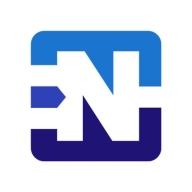


Netgate pfSense and Palo Alto Networks NG Firewalls are major competitors in the firewall market. Netgate pfSense is favored for its cost-effectiveness and open-source platform, whereas Palo Alto Networks NG Firewalls are recognized for their advanced security features incorporating machine learning.
Features: Netgate pfSense is highly customizable and supports a wide range of features such as VPN, routing, and load balancing. It allows scalability and is supported by a robust community. Palo Alto Networks NG Firewalls excel in advanced threat prevention, real-time attack prevention due to machine learning, and a unified platform that integrates all security functionalities efficiently.
Room for Improvement: Netgate pfSense needs to address configuration complexities and improve its user interface for less technical users. Better support for third-party plugin compatibility and user-friendly dashboards are desired. Palo Alto Networks NG Firewalls could improve by reducing costs and simplifying license management. Enhancements in reporting capabilities and quality of technical support are areas for improvement.
Ease of Deployment and Customer Service: Netgate pfSense is flexible and easy to deploy in on-premises environments, though it may require technical expertise for initial setup. It relies on community support with documentation available online. Palo Alto Networks NG Firewalls are known for their comprehensive customer service, but the setup can be complex, requiring deeper technical understanding and higher costs.
Pricing and ROI: Netgate pfSense is an affordable solution with low total ownership costs, ideal for small to medium-sized businesses. Its open-source nature contributes to its cost-effectiveness, though advanced features may demand technical knowledge. Palo Alto Networks NG Firewalls are priced as premium products, with higher total ownership costs justified by their advanced security capabilities, especially beneficial in environments requiring robust threat prevention.
Clients are now comfortable and not wasting productive hours on IT support.
The automation part is giving us a cost benefit and speed; we can react faster.
It's a very useful tool to mitigate and protect your enterprise.
If they can save their data from attackers then it would save them at least two days of not working plus the cost of recovery, which would be much more than the cost of the system and maintenance.
Since the memory leak fixes, it's been incredibly stable and requires minimal maintenance.
In four years of using it, that payment of 189 dollars per year has already paid off.
Their user-friendly interface and Panorama central management, which provides a comprehensive overview, make them an ideal investment.
The solution helped reduce downtime, which is crucial in time-sensitive industries like manufacturing.
I have seen a return on investment since using Palo Alto Networks NG Firewalls in terms of time saved.
They offer very accurate solutions.
The quick resolution of issues with Fortinet FortiGate is due to the support of the company and the fact that the equipment is easy to work with.
I would rate the technical support for Fortinet FortiGate a ten out of ten.
When I provide detailed information about the problem, they've been able to reply quickly with a solution or go research the problem and get back to us quickly with a fix.
They are highly responsive.
I couldn't imagine having better support.
Palo Alto's network support is excellent, and I would rate it a ten out of ten.
Their response time is within one hour.
They offer fast and competent assistance.
They scale up really well from smaller models like the FortiGate 40 and 50 to bigger sites with the FortiGate 100 for more throughput - up to enterprise datacenters.
The variation comes in terms of the interfaces and throughputs, but from a security perspective, you get the same benefit, irrespective of whether you have an entry-level unit or an enterprise.
We determine sizing based on multiple factors: number of users, available links, traffic types, server count, services in use, and whether services will be published.
If I put things into a certain context and say that we have a network that has around 100 people, then you don't put up a device that can manage 100 people. Instead, you need to get a device that can manage 150 to 200 people, and then you can create room for growth.
I don't think Netgate pfSense can offer much scalability for big enterprises.
Even with a jump from a 50 megabit to a 500 megabit internet connection and approximately 65 active VPN clients, our firewall operates smoothly without any strain.
Cloud deployments benefit from auto-scaling, allowing for automatic adjustments to firewall capacity based on demand.
It is important to assess the infrastructure size before choosing a model.
Palo Alto Networks NG Firewalls are scalable and reliable.
We're experiencing 99.999% availability consistently.
I would rate the stability of Fortinet FortiGate a ten out of ten.
Currently, we are experiencing a general outage of one of the main internet service providers of the Dominican Republic, and we have not been impacted in our operations because with SD-WAN, we have another internet service provider and we are working with the second WAN connection without any disruption.
I rate the solution's stability a ten out of ten.
I've noticed a substantial improvement in stability and ease of use for upgrades and patching over the past year or two.
When I replace consumer routers with pfSense for small businesses with two or three employees, they are often amazed to discover the router can run for a year without a reboot.
With appropriately configured policies, these firewalls can provide robust network security.
After the upgrade, we are experiencing performance issues.
I have not experienced any outages or issues.
Investing in a solution that can accommodate such growth would be more cost-effective than repeatedly purchasing new hardware.
While Fortinet claims to offer a comprehensive network solution, it falls short in addressing computer application issues, particularly server security.
When considering Sophos XG, which we also use, the logging and reporting functionality is notably more efficient.
There is some trade-off between having a certain level of security and maintaining acceptable performance.
If I need to go between different VLANs, I have VLAN 19.1 and VLAN 19.2, and I strictly use Netgate pfSense, but it doesn't route very efficiently and works quite slowly.
They should support the idea of configuration management as code from source code and provide a more robust API for managing the pfSense configuration.
When performance degrades due to full packet inspection, the solution should be to increase the computing power within the same firewall, not to recommend upgrading to a larger, more expensive model.
Further integration into a unified system could improve usability.
Palo Alto Networks NG Firewalls lack built-in multi-factor authentication, requiring the purchase of a third-party tool to implement this essential security feature.
Last year, I renewed the support for three years, which can sometimes be expensive but depends on the security benefits and how it helps us.
It offers cost savings as it is generally cheaper than the competition.
It is about 20% cheaper.
The price of setup is approximately €500 to €800, which also includes the initial monitoring.
You can acquire a decent embedded PC for around a hundred dollars and install pfSense on it, effectively creating a robust firewall solution.
The product is free of cost.
Palo Alto Networks NG Firewalls are expensive.
Palo Alto Networks NG Firewalls come at a premium, exceeding the cost of most competitors by 45 percent.
Colleagues looking for the cheapest and fastest firewall can still use Palo Alto Networks NG Firewalls because they are affordable.
In terms of security, we have not experienced any security flaws or loopholes, and it has proven to be quite stable.
FortiGate has helped reduce the risk of cyberattacks that might disrupt our client's production.
These features help reduce our downtime, manage the ISPs, and deploy SLAs for all the website traffic.
We had downtime before pfSense. We've never gone down using the solution.
It is very stable, and it works very well.
With pfSense, network configurations adhere to standard practices, facilitating troubleshooting without the need for complex overlays or policies.
The most valuable features of Palo Alto Networks NG Firewalls are DNS sync calls, enabled security features, and Wildfire.
Threat Vault allows us access to a comprehensive threat database, enabling us to get detailed information on threats and how to mitigate them.
The most valuable feature of Palo Alto Networks NG Firewalls is Cortex Data Lake.
| Product | Market Share (%) |
|---|---|
| Fortinet FortiGate | 20.4% |
| Netgate pfSense | 10.8% |
| Palo Alto Networks NG Firewalls | 4.2% |
| Other | 64.6% |



| Company Size | Count |
|---|---|
| Small Business | 350 |
| Midsize Enterprise | 130 |
| Large Enterprise | 187 |
| Company Size | Count |
|---|---|
| Small Business | 166 |
| Midsize Enterprise | 33 |
| Large Enterprise | 28 |
| Company Size | Count |
|---|---|
| Small Business | 74 |
| Midsize Enterprise | 56 |
| Large Enterprise | 84 |
Fortinet FortiGate excels in providing integrated VPN, firewalling, and Unified Threat Management (UTM) with centralized management and high availability. It supports remote access and comprehensive threat protection, making it a preferred choice for securing networks.
Fortinet FortiGate offers a robust security platform with features such as strong intrusion prevention, application control, and web filtering. Its integration with Active Directory and SD-WAN functionality provides scalable solutions for large networks. Users appreciate its ease of use through centralized management interfaces, ensuring robust security with flexible configurations. However, FortiGate could enhance its graphical interface and technical support responsiveness, address firmware bugs and costly licensing, improve logging, integrate better with third-party tools, and strengthen scalability and memory for log storage. Complexity in configuration and the need for intuitive features are noted challenges, and there's a demand for advanced security, zero-trust capabilities, and AI integration.
What are the key features of Fortinet FortiGate?Fortinet FortiGate is widely implemented across industries like education, finance, and government. Companies use it for firewall protection, VPN, and SD-WAN capabilities, ensuring secure perimeter and data center security. It facilitates remote access management and traffic routing optimization, offering reliable security and connectivity solutions.
Netgate pfSense is widely leveraged by organizations for its comprehensive capabilities in firewalls, VPN servers, and bandwidth management. It suits LAN, WAN, and DMZ networks, offering secure, scalable, and efficient networking solutions.
Netgate pfSense stands out in diverse environments with its enterprise-grade features and cost-effective operations compared to competitors like Cisco. Deployed as an edge device, it optimizes routing, ad-blocking, content filtering, and traffic shaping. Users benefit from its versatile configurations, robust firewall protection, VPN functionality, and ISP load balancing. The open-source nature allows for extensive customization, integrating plugins like Snort and pfBlockerNG, and compatibility with third-party tools enhances its utility. The intuitive GUI combined with detailed logging and centralized management fortifies network security.
What features define Netgate pfSense?
What benefits should be considered for ROI?
Organizations in industries such as finance, healthcare, and education find Netgate pfSense integral due to its advanced security features and cost benefits. Its scalable architecture and strong VPN support are crucial for industries requiring stringent data protection and reliable remote access. The adaptability of pfSense makes it suitable for dynamic environments seeking comprehensive, secure networking solutions.
Palo Alto Networks NG Firewalls deliver advanced threat protection with machine learning, enhancing security through real-time attack prevention. Known for application visibility and a user-friendly interface, they offer robust network protection and flexibility in rule creation.
Palo Alto Networks NG Firewalls are designed to secure environments with features like GlobalProtect VPN, WildFire malware detection, and unified platform integration. Their strong firewall capabilities and high-performance throughput make them suitable for perimeter and data center protection, VPN configurations, application control, and network segmentation. Users consistently highlight the ease of managing network security policies and integrating third-party tools, ensuring a comprehensive protection strategy. While enhancements in support, training resources, and configuration simplicity are needed, these firewalls are integral for securing both on-prem and cloud environments, aligning with platforms like Azure and AWS.
What are the key features of Palo Alto Networks NG Firewalls?Palo Alto Networks NG Firewalls are commonly implemented across industries for securing LAN environments, URL filtering, and ensuring Zero Trust security. They secure both on-premises and cloud infrastructures, often becoming integral parts of security frameworks within enterprises. Leveraging these firewalls in conjunction with Azure or AWS enhances the overall network protection strategies employed by organizations.
We monitor all Firewalls reviews to prevent fraudulent reviews and keep review quality high. We do not post reviews by company employees or direct competitors. We validate each review for authenticity via cross-reference with LinkedIn, and personal follow-up with the reviewer when necessary.